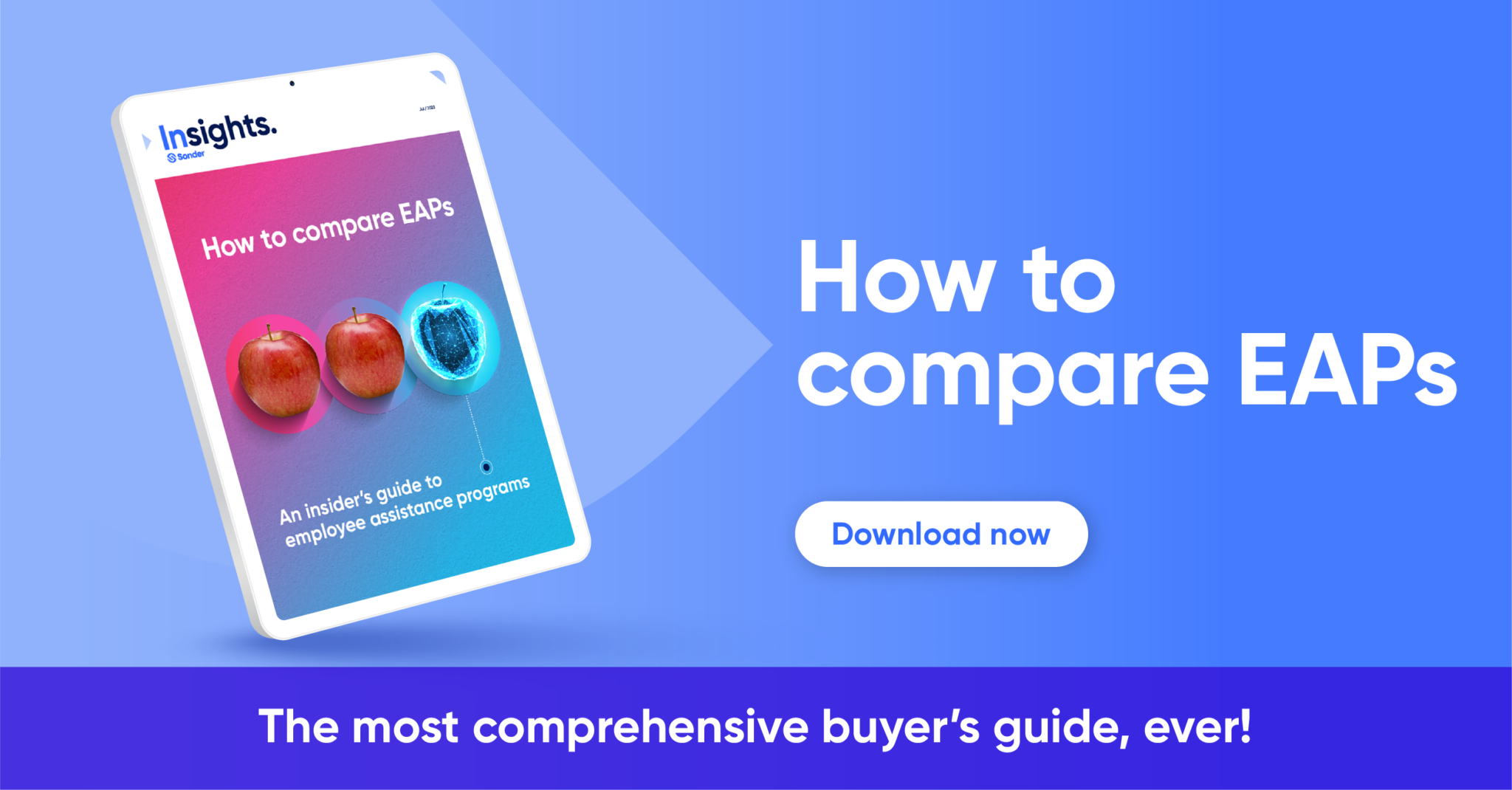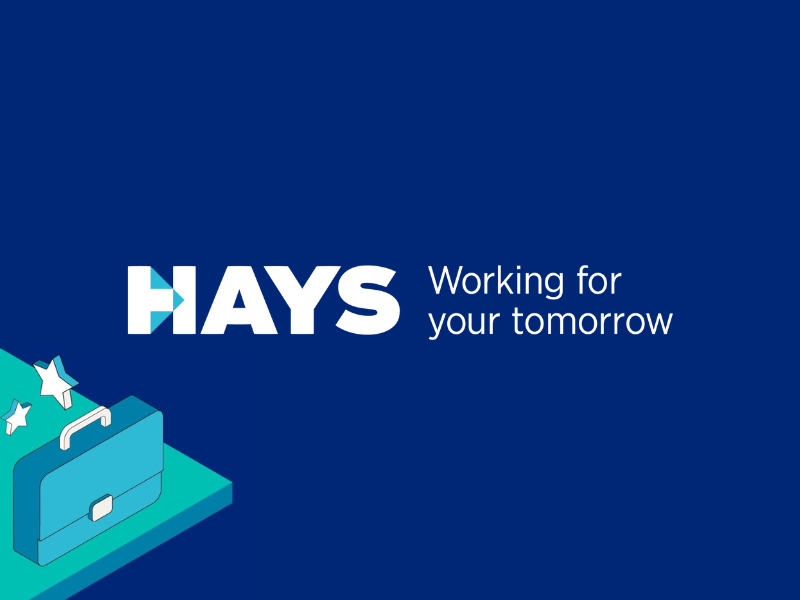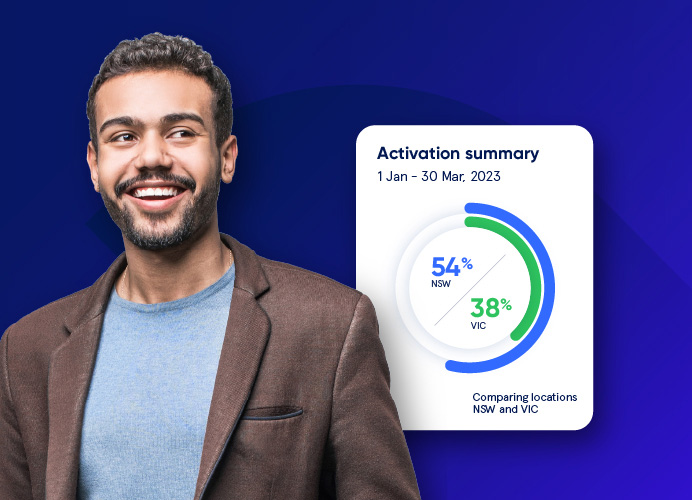How can we measure ROI on EAPs and employee wellbeing programs?

Insights.
Historically, when evaluating employee wellbeing programs, business leaders have focussed on return on investment (ROI) and people leaders have focussed on the impact on their people.
Today, as business leaders have become more attuned to the flow-on business benefits of a healthy workforce#, and people leaders have become more data-savvy, the two camps are building alignment around an agreed return on value (ROV) assessment - which considers the program, business, and people impact.
A key element of this is "putting in place mechanisms to measure performance [which] can enable organisations to achieve desired program impact, improve adoption rates, and enhance decision-making," says Deloitte.
This blog post shares ROI statistics, an overview of ROV assessment measures, and an encouragement for health-savvy leaders to look beyond the metrics. To learn how to compare the business impact of EAPs (and EAP alternatives) in more detail, we invite you to download our 42-page buyer's guide here.
# Sources: Deloitte, McKinsey & Company, Korn Ferry
ROI metrics for EAPs and employee wellbeing programs
Most HR teams are expected to quote ROI metrics in their EAP and employee wellbeing business cases. For that reason, here are some generic statistics that might be helpful for your business case:
- The estimated ROI for mental health support programs is $2.30 - $4+ per dollar spent.*
- The estimated ROI for EAPs in the UK (according to EAPs themselves) is £8.00 per £1.00 invested.
- The estimated ROI for holistic programs (that offer more than only mental health support and counselling) is even higher.
However, we're seeing more and more HR teams talk about replacing ROI metrics with more holistic ROV metrics.
ROI vs ROV
An ROV assessment is a more comprehensive measure of the success of an employee wellbeing program than an ROI calculation.
Given the evidence^ that non-financial metrics can later impact financial metrics, ROV considers both direct and indirect financial benefits to paint a more holistic picture of how an employee wellbeing program is tracking.
An ROV assessment measures:
Direct financial benefits:
- Reduced absenteeism
- Fewer payments for substitute workers
- Reduced presenteeism
- Increased productivity
- Reduced workers' compensation
- Decreased attrition
- Reduced time taken by colleagues to help employees with poor wellbeing
- Improved return to work rates
- Improved lost time injury frequency rates (LTIFR)
Indirect financial benefits:
- Improved employee health and wellbeing
- Enhanced morale and motivation
- Boosted employee engagement
- Improved quality of individual output
- Improved quality of team output
- Enhanced employer branding
- Improved loyalty and retention
- Enhanced organisational resilience

Going beyond the metrics
Pre-2020, few employers meaningfully acknowledged that work and personal lives were inextricably linked. Instead, they sustained "the myth of separate worlds", as labelled by Harvard Business School's Professor Rosabeth Moss Kanter, and did not see an employee's wellbeing as their responsibility.
For example, if an employee lost sleep at night or needed a medical consultation, that was their out-of-hours problem. If their partner was ill and unable to fulfil childcare duties, that was their private issue to fix. If a worker's safety outside of work hours was at risk, there was no reason for work to intervene. If an employee had mental health concerns, it was assumed they would ring the helpline number on the lunchroom poster after they clocked off.
But, somewhere between the blur of Zoom calls, living room intrusions, hybrid work discussions, lockdown stress, and an increase in family and domestic violence (FDV), the COVID-19 pandemic exacerbated a cultural shift that was already in motion, and the world of work irrevocably changed.
In 2023, employee wellbeing strategies and measurements need to recognise that:
- Employees want more control.# From shopping and entertainment to transport and beyond, people now expect to be able to choose what they want, when they want, and how they want it; they want active care. This includes their employee wellbeing experience, which should enhance the autonomy and control they have become accustomed to in their day-to-day lives.
- Employees expect their employers to step up - regardless of the ROI or ROV figures. For many, their health and safety depend on it. If they cannot see a doctor in a medical emergency or cannot access FDV leave when their situation at home has become untenable, their lives can be at risk. In a powerful message of priorities, 91 per cent of 2,000 employees surveyed in Australia thought it was important for their next employer to offer mental wellbeing support, and more than one-third of 1,000 workers surveyed in Australia considered their employer their main source of mental health support.
# Sources: Journal of Occupational Health Psychology, PwC, Harvard Business Review
^ Sonder (October 2022 survey of 2,000 employees in Australia, conducted by McGregor Tan)

How is Sonder different from an EAP?
Sonder is an EAP alternative. We combine mental health support with safety and medical support. We also combine on-demand technology with 24/7 human expertise, as explained in our video:

Want to learn more?
For more information about how Sonder can help you rethink your employee and/or student support, we invite you to contact us here.
Download our deep-dive report
Today's blog post shares excerpts from our new 'How to compare EAPs' guide, which we invite you to download here. This insider's guide to employee assistance programs will help you:
- Define a typical EAP offering
- Summarise why employee uptake has been low
- Discover what makes EAP alternatives different
- Learn how to compare vendor offerings
- Gain insider tips and statistics
- Write a convincing business case
About Sonder
Sonder is an Active Care technology company that helps organisations improve the wellbeing of their people so they perform at their best. Our mobile app provides immediate, 24/7 support from a team of safety, medical, and mental health professionals - plus onsite help for time-sensitive scenarios. Sonder clinicians hold certifications across the United Kingdom, Australia and New Zealand. This puts us alongside leading hospitals and healthcare institutions around the world.
Related posts
There's so much more to share
Sonder is reimagining health, safety and wellbeing support. Sonder proves human centric care leads to earlier intervention. Sonder impacts one person at a time to drive meaningful change across an organisation. Sonder understands people and how to support them.







